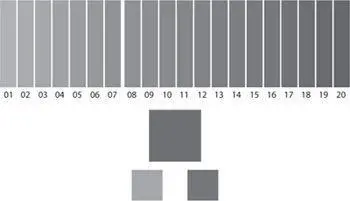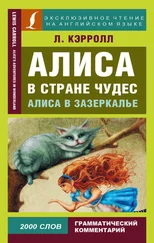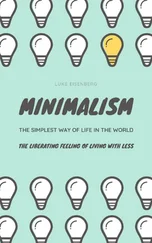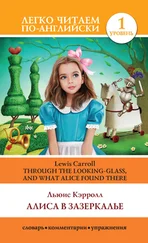The problem with such experiments, however, is that they depend on soliciting subjective judgments for a task that seems vague or ambiguous. As Kay and Kempton conceded themselves, English speakers could have reasoned as follows: “It’s hard to decide here which one looks the most different, since all three are very close in hue. Are there any other kinds of clues I might use? Aha! A and B are both called ‘green’ while C is called ‘blue.’ That solves my problem; I’ll pick C as the most different.” So it is possible that English speakers simply acted on the principle “If in doubt, decide by the name.” And if this is what they did, then the only thing the experiment proved was that English speakers rely on their language as a fallback strategy when they are required to solve a vague task for which there doesn’t seem to be a clear answer. Tarahumara speakers cannot employ this strategy, as they don’t have separate names for green and blue. But that does not prove the English speakers actually perceive the colors any differently from speakers of Tarahumara.
In an attempt to confront this problem head-on, Kay and Kempton repeated the same experiment with another group of English speakers, and this time the participants were told explicitly that they must not rely on the names of the colors when judging which chips were farther apart. But even after this warning, the responses still exaggerated the distance between the chips across the green-blue border. Indeed, when asked to explain their choices, the participants insisted that these chips really looked farther apart. Kay and Kempton concluded that if the names have an effect on speakers’ choices, this effect cannot easily be brought under control or switched off at will, which suggests that language interferes in visual processing on a deep unconscious level. As we’ll soon see, their hunch would metamorphose into something much less vague in later decades. But since the only evidence available in 1984 was based on subjective judgments for ambiguous tasks, it is no wonder that their experiment was not sufficient to convince.
For years it looked as if any attempt to determine in a more objective fashion whether language affects the perception of color would always lead to the same dead end, because there is no way of measuring objectively how close different shades appear to different people. On the one hand, it’s impossible to scan the sensation of color directly off the brain. On the other, if one wants to tease out fine differences in perception by asking people to describe what they see, one necessarily has to devise tasks that involve the choice between very close variants. The tasks might then seem ambiguous and without a correct solution, so even if the mother tongue is shown to influence the choice of answers, it can still be questioned whether language has really affected visual perception or whether it has merely provided inspiration for choosing an answer to a vague question.
It is only recently that researchers managed to maneuver themselves out of this impasse. The method they hit upon is still very indirect, in fact it is positively roundabout. But for the first time, this method has allowed researchers to measure objectively something that is related to perception-the average time it takes people to recognize the difference between certain colors. The idea behind the new method is simple: rather than asking a vague question like “Which two colors look closer to you?” the researchers set the participants a clear and simple task that has just one correct solution. What is actually tested, therefore, is not whether the participants get the right solution (they generally do) but rather their speed of reaction, from which one can draw inferences about brain processes.
One such experiment, published in 2008, was conducted by a team from Stanford, MIT, and UCLA-Jonathan Winawer, Nathan Witthoft, Michael Frank, Lisa Wu, Alex Wade, and Lera Boroditsky. We saw in chapter 3 that Russian has two distinct color names for the range that English subsumes under the name “blue”: siniy (dark blue) and goluboy (light blue). The aim of the experiment was to check whether these two distinct “blues” would affect Russians’ perception of blue shades. The participants were seated in front of a computer screen and shown sets of three blue squares at a time: one square at the top and a pair below, as shown on the facing page and in color in figure 8.
One of the two bottom squares was always exactly the same color as the upper square, and the other was a different shade of blue. The task was to indicate which of the two bottom squares was the same color as the one on top. The participants did not have to say anything aloud, they just had to press one of two buttons, left or right, as quickly as they could once the picture appeared on the screen. (So in the picture above, the correct response would be to press the button on the right.) This was a simple enough task with a simple enough solution, and of course the participants provided the right answer almost all the time. But what the experiment was really designed to measure was how long it took them to press the correct button.

For each set, the colors were chosen from among twenty shades of blue. As was to be expected, the reaction time of all the participants depended first and foremost on how far the shade of the odd square out was from that of the other two. If the upper square was a very dark blue, say shade 18, and the odd one out was a very light blue, say shade 3, participants tended to press the correct button very quickly. But the nearer the hue of the odd one out came to the other two, the longer the reaction time tended to be. So far so unsurprising. It is only to be expected that when we look at two hues that are far apart, we will be quicker to register the difference, whereas if the colors are similar, the brain will require more processing work, and therefore more time, to decide that the two colors are not the same.
The more interesting results emerged when the reaction time of the Russian speakers turned out to depend not just on the objective distance between the shades but also on the borderline between siniy and goluboy ! Suppose the upper square was siniy (dark blue), but immediately on the border with goluboy (light blue). If the odd square out was two shades along toward the light direction (and thus across the border into goluboy ), the average time it took the Russians to press the button was significantly shorter than if the odd square out was the same objective distance away-two shades along-but toward the dark direction, and thus another shade of siniy. When English speakers were tested with exactly the same setup, no such skewing effect was detected in their reaction times. The border between “light blue” and “dark blue” made no difference, and the only relevant factor for their reaction times was the objective distance between the shades.
While this experiment did not measure the actual color sensation directly, it did manage to measure objectively the second-best thing, a reaction time that is closely correlated with visual perception. Most importantly, there was no reliance here on eliciting subjective judgments for an ambiguous task, because participants were never asked to gauge the distances between colors or to say which shades appeared more similar. Instead, they were requested to solve a simple visual task that had just one correct solution. What the experiment measured, their reaction time, is something that the participants were neither conscious of nor had control over. They just pressed the button as quickly as they could whenever a new picture appeared on the screen. But the average speed with which Russians managed to do so was shorter if the colors had different names. The results thus prove that there is something objectively different between Russian and English speakers in the way their visual processing systems react to blue shades.
Читать дальше












